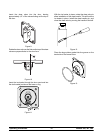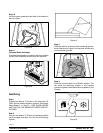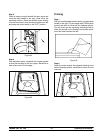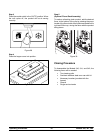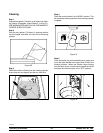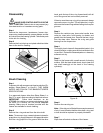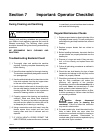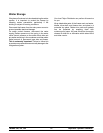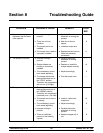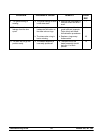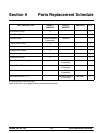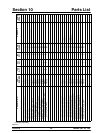
20
Models 340, 341, 342Important: Operator Checklist
051214
Section 7 Important: Operator Checklist
During Cleaning a nd Sanitizing
ALWAYS FOLLOW LOCAL HEALTH CODES.
Cleaning and sanitizing schedules are governed by
your S tate or local regulatory agencies and m ust be
followed accordingly. The following check points
should be stressed during the cleaning and sanitizing
operations.
WE RECOMMEND DAILY CLEANING AND
SANITIZING.
Troubleshooting Bacterial Count
j 1. Thoroughly clean and sanitize the machine
regularly, including complete disa ssembly and
brush cleaning.
j 2. Use all brushes supplied for thorough cleaning.
The brushes are specially designed to reach all
mix passageways.
j 3. Use the white bristle brush to clean the mix inlet
hole which extends from the mix hopper down
to the rear of the freezing cylinder.
j 4. Use the black bristle brush to thoroughly clean
the rear shell bearing located at the rear of the
freezing cylinder. Be sure to have a generous
amount of cleaning solution on the brush.
j 5. Properly prepare the cleaning and sanitizing
solutions. Read and follow label directions
carefully. Too strong of a solution may damage
the parts and too weak of a solution will not do
an adequate job of cleaning or sanitizing.
j 6. Using a screwdriver and cloth towel, keep the
female square drive socket and rear shell
bearing c lean and free of lubricant and mix
deposits.
j 7. IF LOCAL HEALTH CODES PERMIT THE
USE OF RERUN, make sure the rerun is stored
in a sanitized, covered stainless steel container
and used the following day.
Regular Maintenance Checks
j 1. Rotate scraper blades to allow both sides of the
knife edge to wear evenly. This will contribute to
self-sharpening and help maintain fast, efficient
freezing.
j 2. Replace scraper blades that are nicked or
damaged.
j 3. Before installing the beater , be certain that the
scraper blades are properly attached over the
beater pins.
j 4. Dispose of o-rings and seals if they are worn,
torn, or fit too loosely, and replace them with
new ones.
j 5. Follow all lubricating procedures as outlined in
“Assembly”.
j 6. Check the rear shell bearing for signs of wear
(excessive mix leakage in rear drip pan) and be
certain it is properly cleaned.
j 7. Check the condenser(s) for accumulation of dirt
and lint. Dirty condensers will reduce the
efficiency and capacity of the machine.
Condensers should be cleaned monthly with a
soft brush. Never use screwdrivers or other
metal probes to clean between the fins.
Note: For machines equipped with an a ir filter,
it will be necessary to vacuum clean the filters
on a monthly schedule.
Caution: Always disconnect
electrical power prior to cleaning the
condenser. Failure to follow this instruction
may result in electrocution.
j 8. On water cooled units, check the water lines for
kinks or leaks. Kinks can occur when the
machine is moved back and forth for cleaning or
maintenance purposes. Deteriorated or
cracked water lines should be replaced only by
an authorized Taylor mechanic.



